Pinus strobus invasion in the Elbe River Sandstone Mountains, Czech Republic
Věra Hadincová, Handrij Härtel, Tomáš Herben, Marcela Mácová, Iva Theodorová, Tomáš Tichý
Institute of Botany, Academy of Sciences of the Czech Republic,CZ-252 43 Pruhonice, Czech Republic
![]() e-mail: hadincova@ibot.cas.cz
e-mail: hadincova@ibot.cas.cz
phone: +420 (2) 71015256
fax: +420 (2) 67750031
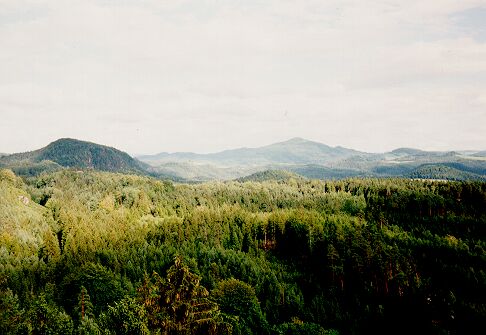
Lanscape in the Elbe River Sandstone Mountains
The North American pine species Pinus strobus became a pest in different sandstone areas in the Czech Republic. It invades into Pinus sylvestris forests both native and cultivated.
Pinus strobus has been cultivated in the Czech Republic since the end of the 18th century but only several decades ago its spontaneous regeneration began to be very fast. It has became to be a pest for Pinus sylvestris forests in sandstone areas in the Czech Republic. The most endangered communities are natural pine forests, represented by the all. Dicrano-Pinion, dwarf shrub communities on rock edges and the vegetation of damp rock slopes with Ledum palustre.
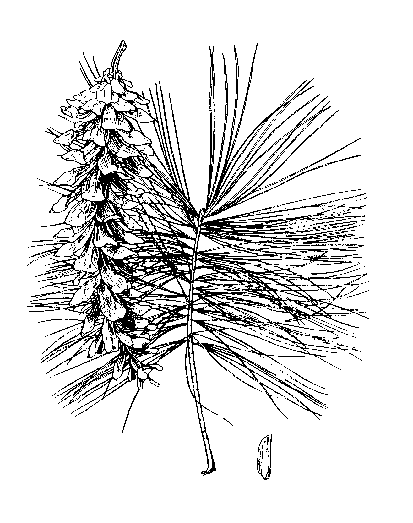 |
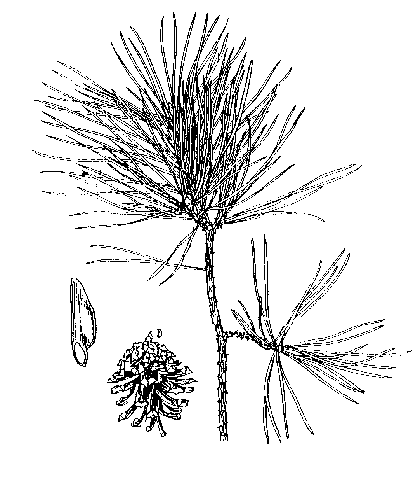 |
| Pinus strobus L. | Pinus sylvestris L. |
The understory vegetation disappear when P. strobus invades into P. sylvestris forests because of the dense canopy and great needle litter production causing the thick detritus layer on the soil surface.
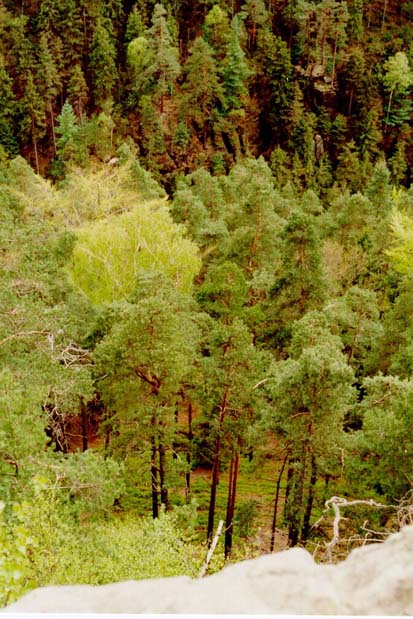
Pinus sylvestris stand of all. Dicrano-Pinion (Libbert 1993) Matuszkiewicz 1962
The most advanced invasion can be seen in the Elbe River Sandstone Mountains (Elbsandsteigebirge). Therefore our study is concentrated into this area, but the invasion advancement in other sandstone areas in the Czech Republic is explored as well.
We are interested in the following points:
1/ The effect of the Pinus strobus species on all of vegetation components, mosses and lichens including. We are interested in how quickly the understory vegetation disappear after the P. strobus has gone into the mature P. sylvestris stands and what is the primary cause of the retreat.
2/ The effect of the Pinus strobus species on the site quality. Several ecological parameters of both P. sylvestris and P. strobus forests are surveying: under canopy rain water quality, soil water quality, soil moisture, canopy density and under canopy light intensity.
3/ Dendrochronological studies. Response functions of both Pinus strobus and P. sylvestris to climate (temperature and precipitation) and difference in their responses to the environmental gradient (from warm, dry upper parts of rocks to cold, humid, lower parts of slopes).
4/ Invasion history in the last 30 years. We are interested in whether the Pinus strobus regeneration has progressed lineary, exponentialy or whether there are time periods when the regeneration was stronger. We are also interested in whether the invasion proceeds in a different way at different localities (different stands, different orientation to sun, different positions on the slope).
5/ Pinus strobus and P. sylvestris regeneration. Here we are interested in how the regeneration proceeds in different forests. We observe the seed production, seed persistence in the litter layer, seed germination and seedling and sapling growth. The better P. strobus regeneration strategy, in comparison with that of P. sylvestris, is supposed to be responsible for its great success. We found that Pinus sylvestris regenerated better than P. sylvestris only at the sunny and extremely dry localities represented by the stands of all. Dicrano-Pinion with nearly only lichens in the understory vegetation. P. strobus regenerated well at not so extremely dry localities and in the cultivated pine forests, its saplings grew much faster there. The best regenaration of Pinus strobus was found at stands where Pinus sylvestris grew together with Picea abies, Quercus petrea and Betula pendula with Ledum palustre in herb layer and with rich moss layer - 28 species.
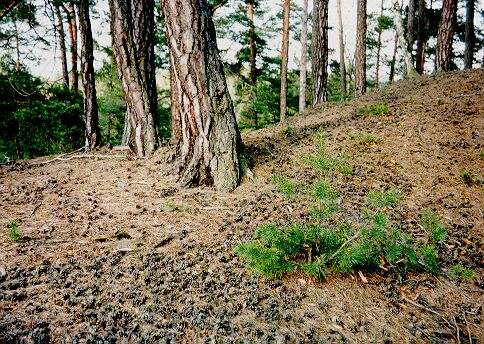 |
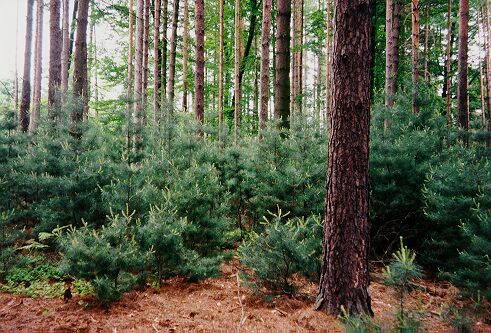 |
Pinus sylvestris regeneratin |
Pinus strobus regeneration |
Literature:
Hadincová V., Dobrý J., Hanzélyová D., Herben T., Krahulec F., Kyncl J., Moravcová L., Šmilauer P., Šmilauerová M. (1997): Invazní druh Pinus strobus v Labských pískovcích. [Invasion of Pinus strobus in the Elbe River Sandstone Mountains]. - Zprávy ČSBS, Materiály 14: 63-80.
Hanzélyová D. (1998): A comparative study of Pinus strobus L. and Pinus sylvestris L.: growth at different soil acidities and nutrient levels. In: U. Starfinger, K. Edwards, I. Kowarik and M. Williamson (eds.): Plant Invasions: Ecological Mechanisms and Human Responses, p. 185-194.- Backhuys Publishers, Leiden, The Netherlands.Härtel H., V. Hadincová (1999): Invasion of White Pine (Pinus strobus L.) into the vegetation of the Elbsandsteigebirge (Czech Republic/Germany). In: Synge H. et Akeroyd J. (eds.): Planta Europa Proceedings, p. 251-255.- Uppsala and London.